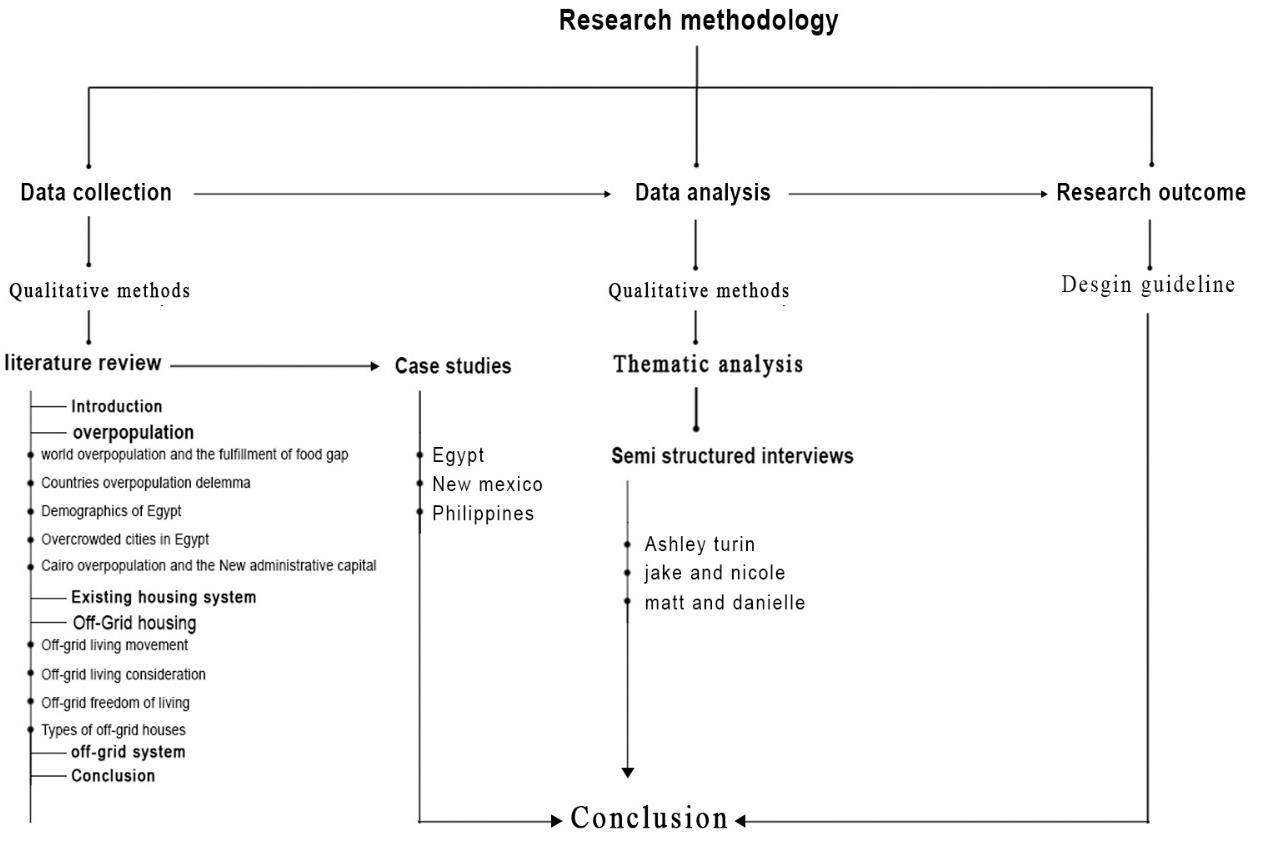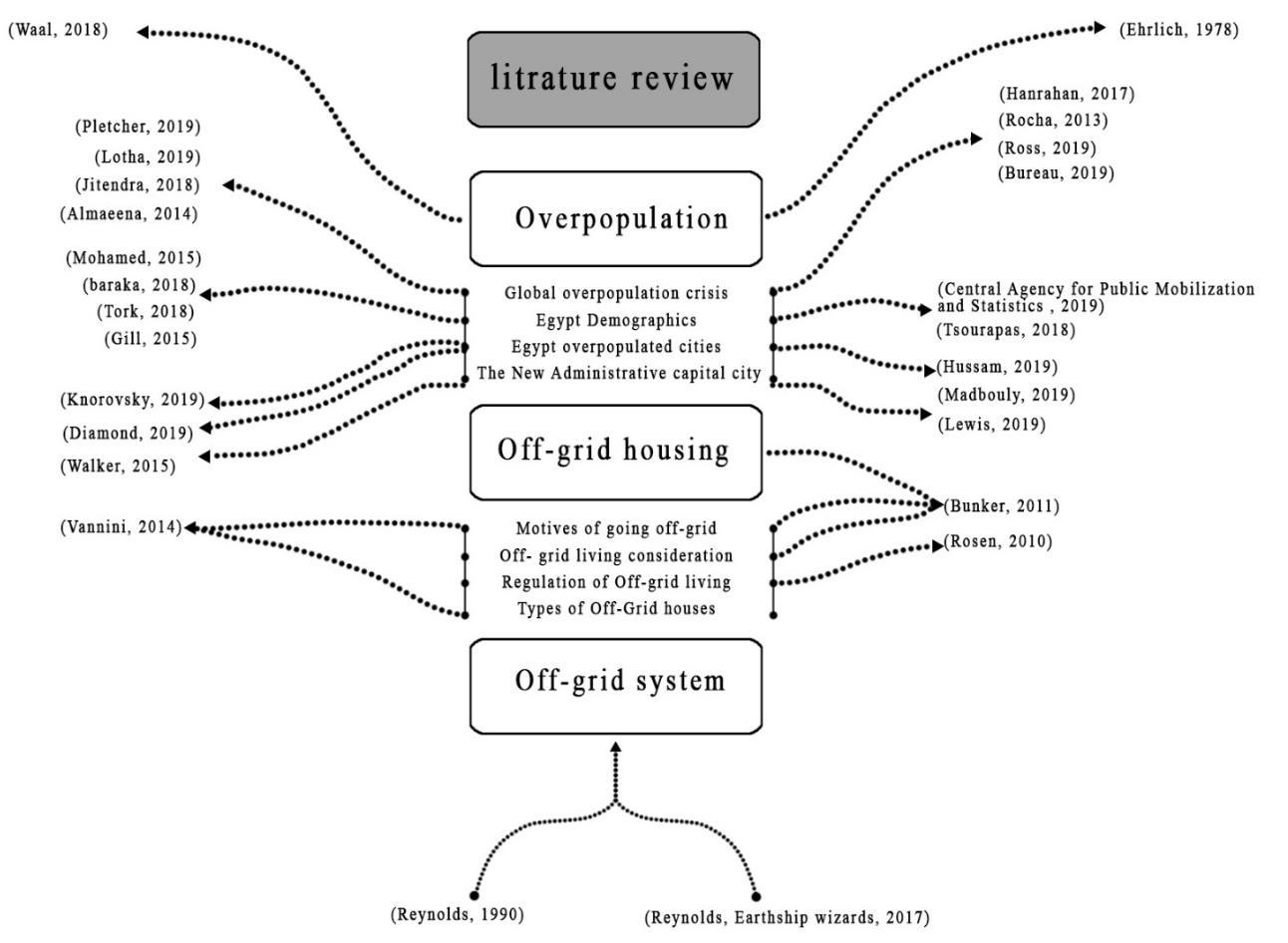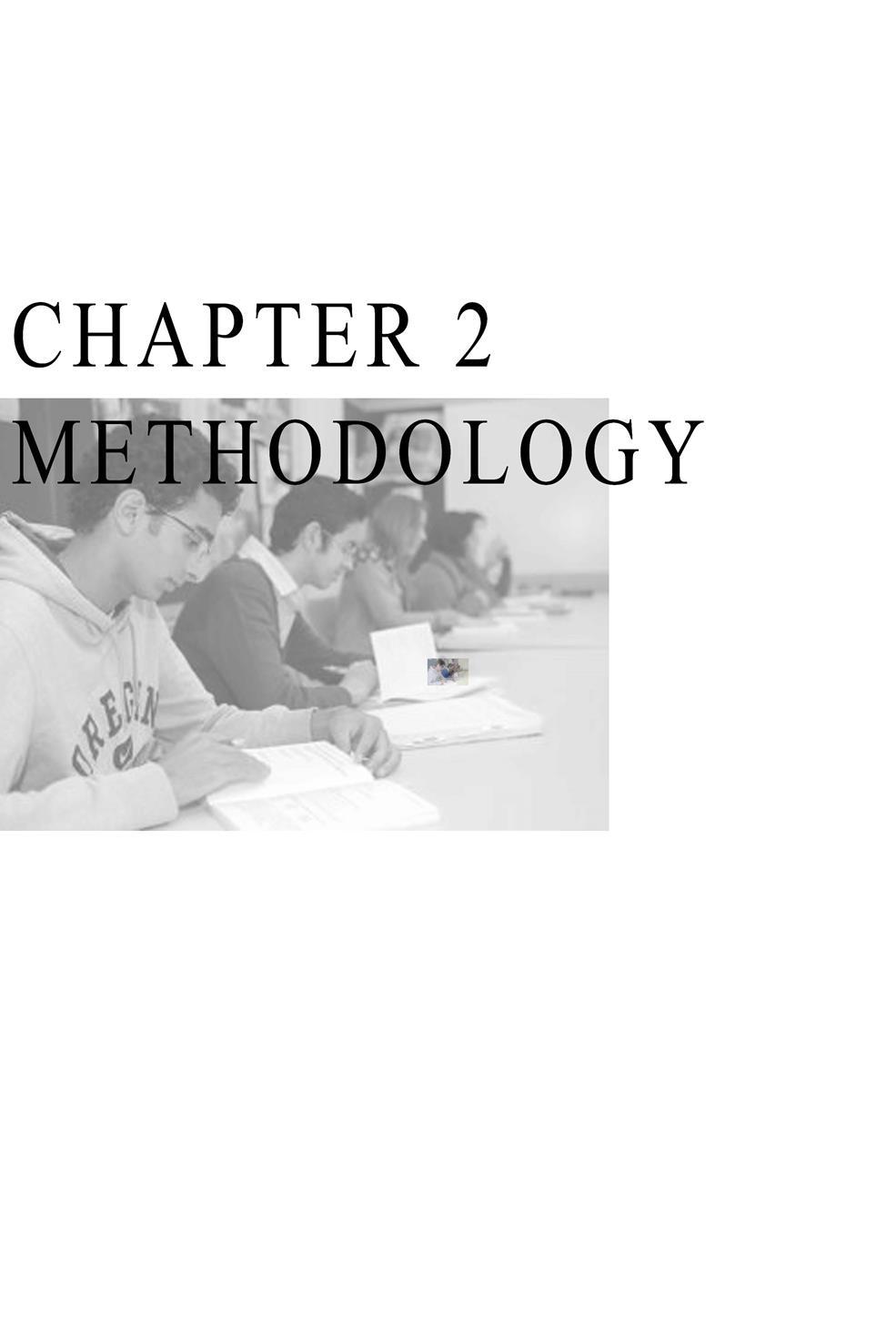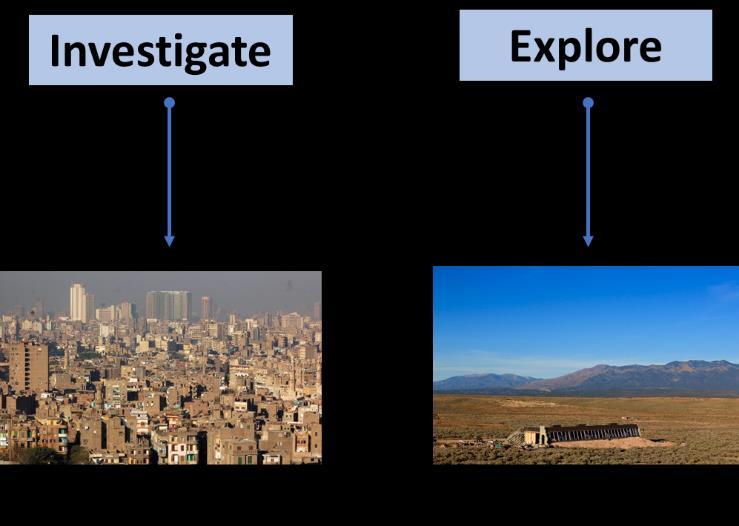
6 minute read
1.3 Research aim and objectives
1.3.1 Main aim
• This research aims to develop a design guideline for Off-grid housing in Egypt as an approach of reducing overpopulation.
Advertisement
1.3.2 Objectives
• Achieve awareness towards efficient living
• Introducing innovative tools and techniques for housing
• Achieve understanding towards building new mega cities in Egypt
• Provide an opportunity to Explore Egypt neglected lands
• Introducing housing that provide freedom from the current governmental framework
1.4 Research Question:
1.4.1 Main question
• How to introduce a design guideline for independent housing, in order to inhabit the Sahara desert as a solution for overpopulation ?
1.4.2 Secondary question:
• What is over population?
• Is overpopulation the core problem for Egypt weak economy and lack of resources?
• Is independent housing in the a reasonable solution for overpopulation?
• Are Egypt current cities development will solve over population and the management of the
people’s resources?
• Is building new housing communities in the desert a reasonable step towards improving Egypt
whole economy?
1.5 Research methodology
1.5.1 Research methodology map
Figure (1) methodology map: (developed by author)
1.5.2 Exploratory qualitative analysis
This research methodology is an exploratory qualitative approach to explore the main aspects of overpopulation and address the different under-researched negative impacts of overpopulation. By measuring and categorizing different patterns of overpopulation in Egypt human dense cities. A comprehensive literature review will be written about the overpopulation crisis facing the world and narrowing down to Egypt overcrowded cities and then leading to the Off-grid living as and approach of escaping the dilemmas caused by overpopulation. As an research outcome providing a design guideline for a sufficient off-grid living as a solution for reducing overpopulation.
1.5.3 Data collection
To have a better understanding of how off-grid living can operate in an environment such as Egypt deserts, the collected data for this research should be reliable. This will be possible by applying qualitative methods of collecting data which are:
1.5.3.1 Conducting a literature review
Previous studies on overpopulation and off- grid housing
1.5.3.2 Studying Existing data
Conducting a literature review, reviewing past researches on overpopulation and Off-grid living
1.5.4 Data analysis
Thematic analysis will be the approach of analysis to understand people’s views on Off-grid living, opinions, experiences with overpopulation through the interviews and questionnaires
1.5.4.1 Conducting Interviews
A group of semi structured interview were done to study experienced people perceptions of Off-grid living. The interviews provided a clear understanding on what to consider when living off-grid and the different obstacles that people will going to meet. The interviews are analysed using a thematic analysis method, this analysis all contribute on the development of the design guidelines
1.5.4.2 Research outcome
A design guideline is produced by analyzing the collected data from the projects previously mentioned. Analyzing this data will provide an understanding of Egypt's patterns of problems caused by the dense overpopulated area in Egypt.
1.6 Literature review map
1.6.1 Overpopulation
The first topic will be about the world overpopulation crisis and narrowing down to overpopulation in Egypt
and its overcrowded cities.
1.6.2 Off-grid living
The second topic will be about Off-grid living movement and narrowing down to the most efficient type of Off-grid living

Figure (2) literature review map: (developed by author)
7. Key words
• overpopulation
• Off - grid housing
• Egypt
• Government
• Earthship

1.1 Introduction Chapter (2) Methodology
The purpose of this chapter is to introduce the research methodology for this exploratory qualitative study with explanatory research aims to explain the causes and consequences of overpopulation And explore the main aspects of Off-Grid housing as an approach for eliminating overpopulation in Egypt and its impacts on the housing system. This approach is further necessary for a deeper understanding of the Off-grid housing system and how it could provide a solution for overpopulation in Egypt and eventually develop a design guideline to ensure the Compatability of Off-grid housing to the Egyptian environment.
The applicability of the exploratory qualitative approach for this study is discussed in-depth in this chapter. The research plan, including the methodology, literature review, case studies, procedures, analysis method, and ethical concerns are also primary components of this chapter.
1.1 Research Question
This thesis sought to build a design guideline in answer to the following research question:
How to introduce design guideline for Off-grid housing, to reduce overpopulation?
1.2 Criteria for validity and reliability
Reliability and validity are the main concepts used to evaluate the quality of this thesis. They indicate how well a technique and method measures something.
1.2.1 Reliability of the thesis
Reliability is translated to the extent to which the Design guideline can be reproduced when the research is repeated under the same conditions.
1.2.2 Validity of the thesis
Validity is translated to The extent to which the design guidelines work as a solution for overpopulation.
1.3 Methodology Selected
A qualitative study is appropriate when the goal of the research is to explain a phenomenon by relying on the perception of a person’s experience in a given situation (Stake, 2010). As outlined by Creswell (2003), a quantitative approach is appropriate when a researcher seeks to understand relationships between variables. Because the objective of this study is to explore and observe the changes the conquered to Egypt over the years as a result of overpopulation and involve describing subjective experiences, interpreting meanings, and understanding concepts.
1.4 Exploratory study method
Exploratory research is described as research that is used to explore an unresolved problem (Stebbins, 2011). It is performed to understand a better existing issue. it begins with a general concept for such research and uses this research as a tool to define problems that could be the subject for future research. It helpsilay the foundation ofiresearch, which can lead to furtheriresearch. It can assist other researchers to find out possible causes for the problem, whichican be further studied in detail to findiout, which of them is the mostilikely cause for theiproblem.

Figure 3 objectives of exploratory qualitative study: (developed by author)
1.4.1 primary research method
Interviews: Iniperson, interview give in-depthiinformation on theisubject being studied. Sucresearch is a qualitative research method. An interview with a subject matter expert can give you meaningful insights that a generalized public source won’tibe able to provide. Interviews are carried out in person or on the telephone which has open-endediquestions to get meaningful informationiabout the topic.
1.4.2 Secondary research method
Since my approach in this thesis is to use qualitative methods, the method I chose to collect data is a Secondary research method which is to gather information fromipreviously published primary research. In suchiresearch I will be gathering information from sources likesicase studies, magazines, inewspapers, books, ietc.
1.4.3 Onlineiresearch:
The thesis content will be largely sourced from the internet. With consideration to the genuineness and authenticity of the source websites, online journals, books, and articles
1.4.4 Literature research
By gathering the amount of informationiavailable in libraries, online sources, or evenicommercial databases. Sources includeinewspapers, magazines, books fromithe library, documents from government agencies, specific topicirelated articles, literature, Annual reports, published statistics from researchiorganizations, and
so on.
1.4.4 Case study research
Case study research purpose helps with findingimore information through carefullyianalyzing existing cases that have gone through a similariproblem. analyses of cases are taken care of iniregards to all the variables presenti in the previous caseiagainst the chosen cases.









